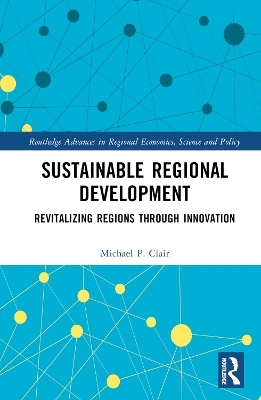
Sustainable Regional Development
Revitalizing Regions through Innovation
Seiten
2023
Routledge (Verlag)
978-1-032-51985-2 (ISBN)
Routledge (Verlag)
978-1-032-51985-2 (ISBN)
This book will provide some ideas to help any region reinvent itself. It shows how effective leaders are needed to help stimulate more creative activity and coordinate the necessary resources to turn creative ideas into innovations.
Many communities and regions are being left behind in the new economic order. The book starts with the premise that, in today’s knowledge-based economy, innovation is key, but that only seems to happen in larger urban centres. It seems that smaller centres and peripheral regions can only look forward to decline and eventual irrelevance, but this need not be the case.
Wherever there are people, there is the potential to innovate. This book demonstrates that innovators are not limited to inventors and entrepreneurs. Each innovation starts with an idea that is nurtured by its creator and incubated by the larger community. The book identifies different categories of creators such that many readers will recognize themselves as being, in fact, creators. And it identifies different ways of coming up with ideas, which may validate how creators spend their time. It identifies ways to judge whether ideas should be pursued or not and looks at the steps required to turn an idea into an innovation. Many declining communities and regions around the world have resuscitated themselves by being creative and innovative — sometimes in startling ways. This book will provide some ideas to help any region reinvent itself. But having a few individuals with good ideas is not sufficient to revive a region. This book also shows how effective leaders are needed to help stimulate more creative activity and, just as importantly, to coordinate the necessary resources to turn creative ideas into innovations.
The book will appeal to students, scholars and researchers of economic, regional, social and sustainable development, innovation, public policy and economic geography, as well as practitioners and policymakers concerned with regional development and regional innovation policies.
Many communities and regions are being left behind in the new economic order. The book starts with the premise that, in today’s knowledge-based economy, innovation is key, but that only seems to happen in larger urban centres. It seems that smaller centres and peripheral regions can only look forward to decline and eventual irrelevance, but this need not be the case.
Wherever there are people, there is the potential to innovate. This book demonstrates that innovators are not limited to inventors and entrepreneurs. Each innovation starts with an idea that is nurtured by its creator and incubated by the larger community. The book identifies different categories of creators such that many readers will recognize themselves as being, in fact, creators. And it identifies different ways of coming up with ideas, which may validate how creators spend their time. It identifies ways to judge whether ideas should be pursued or not and looks at the steps required to turn an idea into an innovation. Many declining communities and regions around the world have resuscitated themselves by being creative and innovative — sometimes in startling ways. This book will provide some ideas to help any region reinvent itself. But having a few individuals with good ideas is not sufficient to revive a region. This book also shows how effective leaders are needed to help stimulate more creative activity and, just as importantly, to coordinate the necessary resources to turn creative ideas into innovations.
The book will appeal to students, scholars and researchers of economic, regional, social and sustainable development, innovation, public policy and economic geography, as well as practitioners and policymakers concerned with regional development and regional innovation policies.
Michael P. Clair is a former senior administrator with the Government of Newfoundland and Labrador and with Memorial University of Newfoundland, now acting as a consultant in regional development.
Part I: Setting the stage 1. Introduction 2. What is innovation and why do we need more of It? Part II: From the idea to the innovation 3. Where do ideas come from? 4. Where can innovation take place? 5. How do ideas come about? 6. Validating your idea 7. Bringing your idea into the world Part III: Creating an Innovative Region 8. Becoming an innovation hub 9. The environment for success 10. The elements of success 11. Putting it all together
| Erscheinungsdatum | 22.08.2023 |
|---|---|
| Reihe/Serie | Routledge Advances in Regional Economics, Science and Policy |
| Zusatzinfo | 1 Line drawings, black and white; 1 Halftones, black and white; 2 Illustrations, black and white |
| Verlagsort | London |
| Sprache | englisch |
| Maße | 156 x 234 mm |
| Gewicht | 380 g |
| Themenwelt | Naturwissenschaften ► Biologie ► Ökologie / Naturschutz |
| Naturwissenschaften ► Geowissenschaften ► Geografie / Kartografie | |
| Sozialwissenschaften ► Soziologie ► Spezielle Soziologien | |
| ISBN-10 | 1-032-51985-1 / 1032519851 |
| ISBN-13 | 978-1-032-51985-2 / 9781032519852 |
| Zustand | Neuware |
| Haben Sie eine Frage zum Produkt? |
Mehr entdecken
aus dem Bereich
aus dem Bereich


